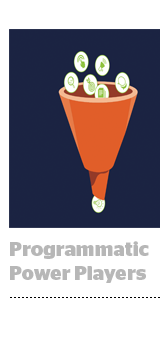
The United States and United Kingdom are dominating in programmatic innovation, but Germany could be the next big player in the space, according to a study released Thursday from the World Federation of Advertisers (WFA).
The WFA analyzed 13 countries with significant ad markets. The group looked at programmatic spend per capita, amount of private marketplace (PMP) transactions, penetration of ads.txt, programmatic video inventory and other factors that would signify programmatic maturity.
The top tier, which the WFA calls programmatic first markets, includes the United States, United Kingdom, Australia and France. Programmatic first markets have most inventory available programmatically, and an abundance of scaled premium video available in flexible and transparent business models.
“Publishers in Programmatic First Markets tend to sell a much higher proportion of their video inventory via SSPs than in other market categories,” the WFA writes. “Publishers selling their most valuable assets in this way signifies a full embracing of programmatic as a monetization technique across all properties.”
Also, countries in this tier had up to 40% of inventory traded through PMPs.
“PMP adoption tends to increase prices, but the opportunity for advertisers is presented through access to unique publisher data,” according to the report. That data lets advertisers develop more customized plans.
The second tier, maturing markets where access is slightly less automated, includes Germany, Brazil and Japan.
As in the top tier, most inventory in maturing markets is available programmatically, but there’s less automation, and there’s still an emphasis on traditional relationships. Agencies in these countries are prominent, publishers have less control and restrict data more and advertisers often have to work through ad networks to gain access.
That Germany and Japan are only maturing markets is surprising – particularly with Germany, which has about the same programmatic spend per capita as France, which was in the top tier.
EMarketer estimated at the beginning of 2018 that programmatic ad spend in Germany would reach €1.44 billion ($1.59 billion) in 2018, up 29.7% from 2017. In 2019, Germany’s programmatic ad spend is expected to increase further to €1.66 billion ($1.83 billion).
But WFA global lead Matt Green told AdExchanger other factors placed Germany in the second-highest category.
“There are some considerations within the German market,” Green said. “For example, the penetration of programmatic doesn’t go beyond a few publishers.” Fewer publishers hold more programmatic dollars, so distribution of that spend across the market would likely boost Germany to the top category, Green said.
The WFA considers China, Indonesia and Asia as mobile first markets, where most inventory is available on mobile devices. In mobile first markets, however, attention spans are shorter and data use is more limited, so the WFA recommends shortening videos and focusing on “non-intrusive” mobile formats.
Also, in-app ad fraud is rampant and measurement difficult – so advertisers should work with fraud specialists and follow through on reimbursement.
Finally, Russia, South Africa and Malaysia are categorized as emerging programmatic markets, which still have legacy trading practices and where transparency is still a problem.
But it’s still too early to predict how these countries will shake out programmatically, and the WFA says advertisers looking to market in these places should look toward ad networks, search engines and local messaging apps.
Meanwhile, the level of programmatic sophistication is so high in the United States and United Kingdom that future iterations of this study might need to create an even higher tier for these countries. In the United States alone, AppNexus predicts programmatic display ad spend will hit $45.72 billion in 2019.
“These markets should not rest on their laurels, but a lot of the programmatic innovation is coming out of the United States and United Kingdom,” Green said.
This post was syndicated from Ad Exchanger.


More Stories
The Trade Desk’s OpenPass Adds Rewards As It Pursues Wider Adoption
NZME’s work recognised at INMA Global Media Awards
Leading Brand Transformation: A Masterclass With Doug Zarkin